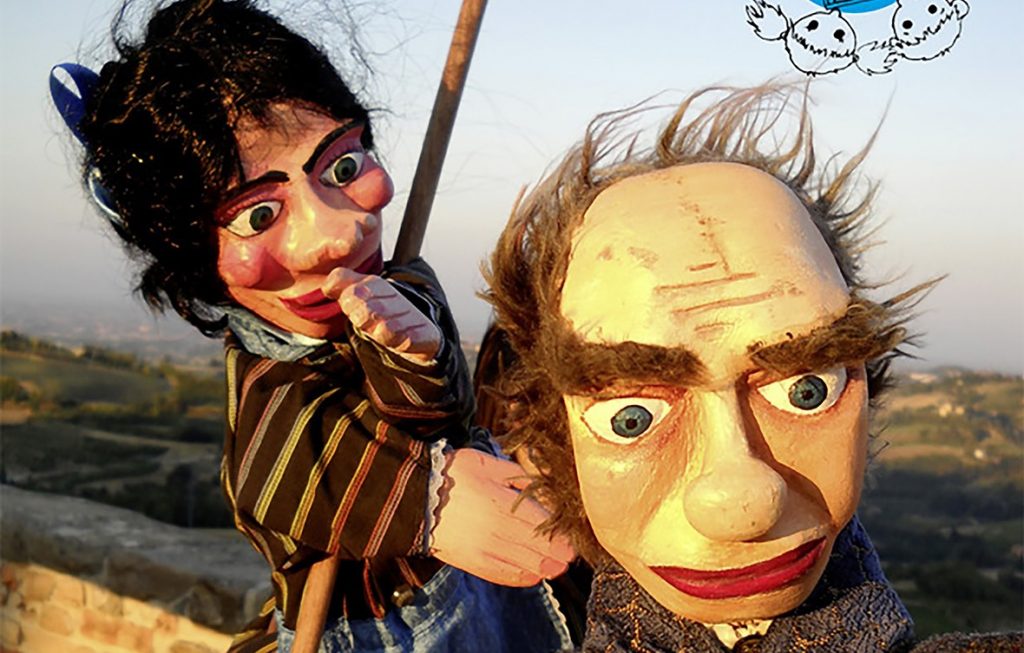
La storia di Q
Alessandro Carboni (Sardegna)
LA STORIA DI Q
Performance/laboratorio per 25 bambini, dai 5 anni agli 8 anni
Sabato 27 maggio ore 16:00 – Ravenna, Artificerie Almagià
Progetto vincitore di CollaborAction kids – azione del Network Anticorpi XL 2022/2023
in collaborazione con ATER Fondazione e Cantieri Danza
La Storia di Q prende liberamente spunto dal testo pubblicato per la prima volta nel 1884, Flatland. Racconto fantastico a più dimensioni di Edwin A. Abbott, un romanzo fantascientifico che narra la vita in un mondo formato da solo due dimensioni – come un enorme foglio di carta – abitato da migliaia di figure geometriche (quadrati, triangoli, paralleli, cerchi) che parlano e si comportano come uomini. Questo mondo bidimensionale viene raccontato da un suo abitante, Quadrato, che narra della vita dentro Flatlandia, e nello spettacolo diviene il personaggio mediatore Q. Partendo da questo testo per adulti, l’artista riscrive la storia ad un linguaggio adatto all’infanzia per facilitare la comprensione. Attraverso la manipolazione di forme di carta, l’artista propone ai bambini di immaginare e conoscere le abitudini degli strani abitanti di Flatlandia: come si muovono, come si riconoscono, come si relazionano fra loro… Nella performance i bambini assistono a l’emozionante sogno di Q, nel quale – attraverso il dialogo con una Sfera – il quadrato conosce la sconvolgente realtà dello spazio tridimensionale e le possibilità di movimento che gli oggetti hanno all’interno del mondo di Spacelandia. Successivamente alla performance, attraverso l’utilizzo e la manipolazione di materiali bidimensionali (carta) e tridimensionali (oggetti di uso quotidiano), la musica e il movimento creativo, i bambini vengono coinvolti nel laboratorio. I bambini giocano e imparano intorno ai concetti di: pieno e vuoto, linea-confine-limite, spazio e direzioni, dentro e fuori, forme geometriche e la loro combinazione, spazio personale e lo spazio generale, parti del corpo e la relazione fra esse, bidimensionalità e tridimensionalità, volumi, livelli e azioni di movimento.
Alessandro Carboni intreccia in modo esclusivo ricerca performativa, indagine visiva, geografia sperimentale e Critical Cartography, con un’attenzione speciale alle pratiche di trasmissione e condivisione. Coreografo e performer attivo tra Europa e Asia, il lavoro di Carboni abita gli spazi urbani, disegna traiettorie e riscrive le volumetrie di teatri e musei. La sua ricerca orbita attorno alla complessa rete di permutazioni tra lo spazio e i suoi elementi costitutivi – luoghi, persone, relazioni –, tutti piani di proiezione da cui emergono questioni critiche sul contemporaneo. Come docente e formatore, ha dedicato le sue ricerche allo sviluppo di metodi e processi creativi in ambito artistico, sociale, di educazione all’impresa e innovazione, scolastico di ogni ordine e grado, e dell’aggiornamento per gli insegnanti. Ha tenuto lezioni, corsi e conferenze in numerose istituzioni accademiche e non accademiche.
English version
THE STORY of Q
The Story of Q is freely inspired by the text first published in 1884, “Flatland. Multi-dimensional fantastic tale” by Edwin A. Abbott, a science fiction novel which narrates life in a world made up of only two dimensions – like a huge sheet of paper – inhabited by thousands of geometric figures (squares, triangles, parallels, circles) which they talk and behave like men. This two-dimensional world is told by one of its inhabitants, Quadrato, who tells of life in Flatland, and in the show he becomes the mediator character Q. Starting from this text for adults, the artist rewrites the story in a language suitable for children to facilitate the comprehension. Through the manipulation of forms of paper, the artist suggests that children imagine and learn about the habits of the strange inhabitants of Flatland: how they move, how they recognize each other, how they relate to each other… In the performance, the children witness the Q’s exciting dream, in which – through dialogue with a Sphere – the square gets to know the shocking reality of three-dimensional space and the possibilities of movement that objects have within the world of Spacelandia. After the performance, through the use and manipulation of two-dimensional (paper) and three-dimensional materials (everyday objects), music and creative movement, the children are involved in the laboratory. Children play and learn around the concepts of: full and empty, line-boundary-limit, space and directions, inside and outside, geometric shapes and their combination, personal space and the general space, parts of the body and the relationship between them, two- and three-dimensionality, volumes, levels and movement actions.
Alessandro Carboni weaves performative research, visual investigation, experimental geography and Critical Cartography in an exclusive way, with special attention to the practices of transmission and sharing. Choreographer and performer active between Europe and Asia, Carboni’s work inhabits urban spaces, draws trajectories and rewrites the volumes of theaters and museums. His research revolves around the complex network of permutations between space and its constituent elements – places, people, relationships – all projection planes from which critical questions about the contemporary emerge. As a teacher and trainer, he has dedicated his research to the development of creative methods and processes in the fields of art, society, education for business and innovation, school of all levels, and refresher courses for teachers. He has held lectures, courses and conferences in numerous academic and non-academic institutions.















